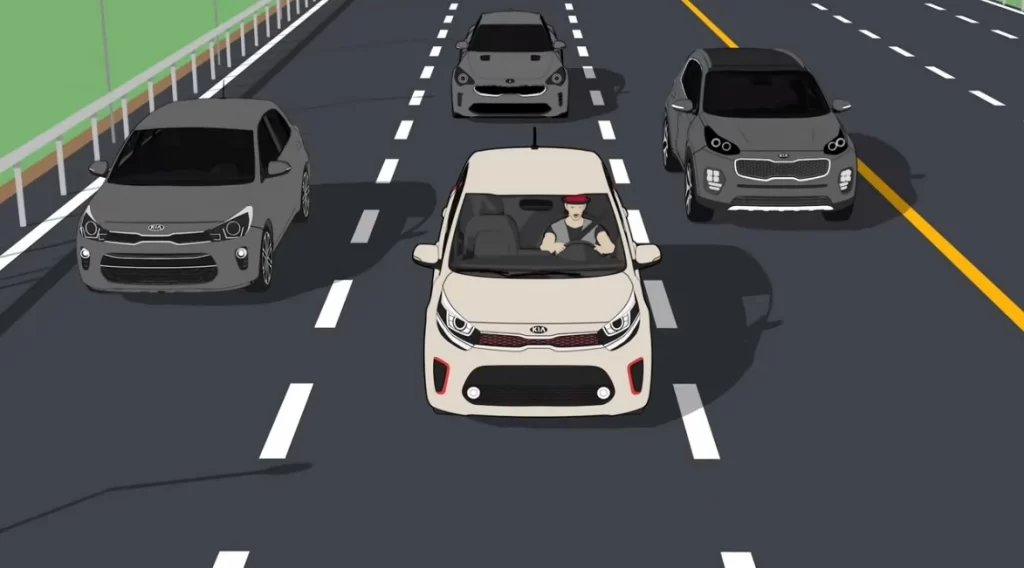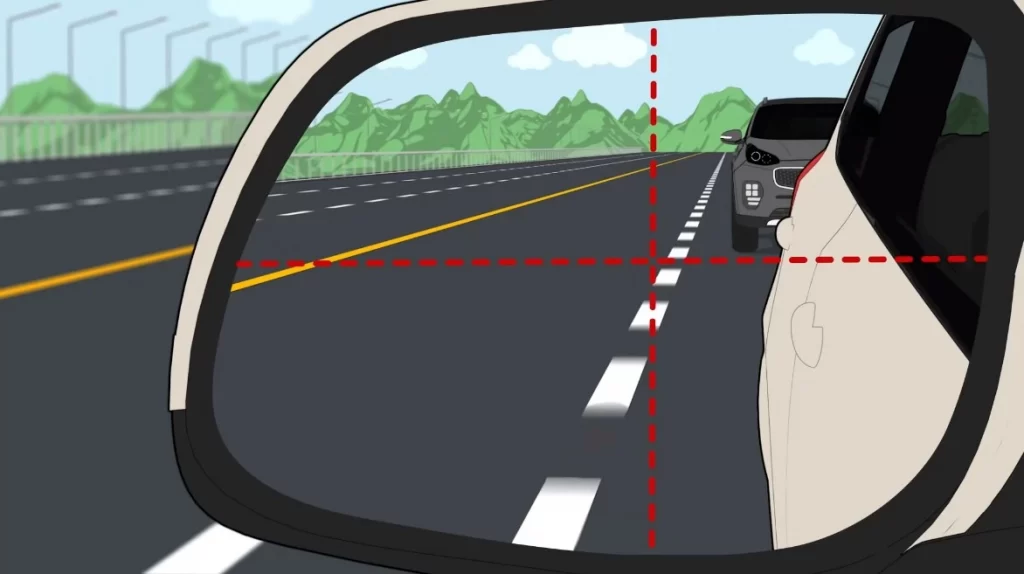Your good driving is essentially important for your safety, the passengers in your vehicle, the other cars on the road, and every other person on the road. An elementary mistake from yourself can lead to severe damages for humans and property.
Changing the lanes in heavy traffic is something that is not easy and needs a lot of practice. So, it is essential to learn and practice the best practices of driving before you get into the road. In this article, we discuss how to change lanes in heavy traffic.
Before changing the lanes.
Before discuss about the How to Change Lanes in Heavy Traffic, Changing the lines has to be done with a pretty good focus. So before making a lane change, you must stop the chitchats with the other passengers inside and stop the phone calls if you are in a one. When you are well focused on the road and your current speed, then you are ready for the next step.

Whether we discuss these things in long paragraphs, any of these things takes just a matter of time. So do not hesitate over.
How to Change Lanes in Heavy Traffic? When changing.
We break the tutorial into five main points.
- Turn on your signal lights. Take a look in your mirrors.
- By glancing over your shoulder, you can determine whether you have a blind spot.
- Change your lane if it is safe to do so.
- After you have completed the lane change, turn off your signal.
Now let’s discuss these things one by one to understand the things better.
Turn on your signal lights.
The first thing of any turn or a lane change is to turn on the signal lights to notify the other drivers that you will turn your vehicle or change the lane in the next minutes.
So once you have turned on the signals, the others behind and in front of you know that you will change the lanes, and they will get ready automatically.
Right after turning on the signals, you check whether you have turned on the right side signals. When everything is fine, it is time for the next step.
Take a look in your mirrors.
This is the very important second step. Looking at your mirrors gives you a pretty good view to observe the positions of other vehicles following you.
We are talking about how to change the lines in heavy traffic. So it would be best if you never changed the lanes without looking at your mirrors at least twice.
There are three mirrors for you to look in. So I strongly recommend looking in all three mirrors. It will give you added safety.

By glancing over your shoulder, you can determine whether you have a blind spot.
If you are not sure whether you have seen everything behind you, you can look behind over your shoulder. It will clean out the vision for you.
But do not wait in that watching position for over a long time because it can bring you unexpected things from the vehicles in front of you.
Change your lane if it is safe to do so.
Then it is time to change the lines if it is safe to do. When changing the lanes, you must not lower your speed more than expected because the cars behind you can come and hit you from the back.
So make sure that everything is safe. I say this repeatedly because a very simple mistake can lead to a number of deaths in just a matter of time. So be cautious in each second you drive.
Well, there is not only one lane to change. There can be several lanes that you can change into. So before turning, you must confirm the lane that you’re going to turn into.
So after confirmation, then take your car to the relevant lanes safely without changing your speed much slower.
After you have completed the lane change, turn off your signal.
All done, now you have changed the lane. Now you are safe and done, so turn off the signal lights. That’s all.
Why do most accidents occur on lane changing in heavy traffic?
These collisions occur most frequently on multi-lane highways with significant traffic volumes (such as motorways and urban arterial roads).
A roadside activity (such as roadside markets or areas where public transportation vehicles/taxis pick up and drop off people) can also be encountered regularly.
Because of the lower speeds between the cars, the severity of the accident between them is frequently mild. However, when cars or road users of varying sizes collide, the results may be severe and even fatal (e.g., motorcyclist and car, car and truck).
Never do these when changing the lanes in heavy traffic.
Forgetting to activate or deactivate the turn signals on the vehicle.
Drivers behind you may still expect you to make a turn in the direction your turn lights are showing even though you have forgotten to deactivate them. This may be extremely risky and may result in an accident in some cases.
The mirrors have been set incorrectly.
The mirrors should be installed in such a way that you can scan the area surrounding your car without having to move your body. When the mirrors are correctly positioned, the only location they will not cover is the blind spot, often known as the shoulder-check spot.
Before changing lanes, you should slow down.
A lane change is a standard component of driving that should not cause any delays or disruptions to the flow of traffic on the highway. While merging into a new lane, maintain your current pace. Following a successful merge into the new lane, you will be able to modify your speed (slowing down or speeding up) in accordance with how fast the new lane is traveling.
Moving out of the house too soon.
The car in front of you should not change lanes if the vehicle in front of you has already begun to change lanes or has proceeded to pass you. Check for potential risks before you move out to prevent being caught off guard and putting yourself in a possibly dangerous scenario.
Some related FAQs to How to Change Lanes in Heavy Traffic.
How can I get rid of my fear of changing lanes?
Just follow the steps in this article, then you are risk-free. Watch out for this YouTube video for more.
How do I change lanes in heavy traffic in Singapore?
What is the on and off clutch technique?
The procedure is shifting into first or reverse gear while simultaneously pressing down on the clutch and the brakes with both feet. After then, release the brakes with one foot while keeping the other foot on the clutch that has been partially released (see illustration). Slowly press the accelerator pedal, and as soon as the car begins to move, remove the clutch pedal as well.
We hope you’ve got the answer that you’ve needed for the question, “How to Change Lanes in Heavy Traffic” reading our explanation. If you have more questions just leave a comment below, and we are really straightforward to help you further. If you need review and problems of the Companies with Electric Cars, check this link for it. Thank you.
